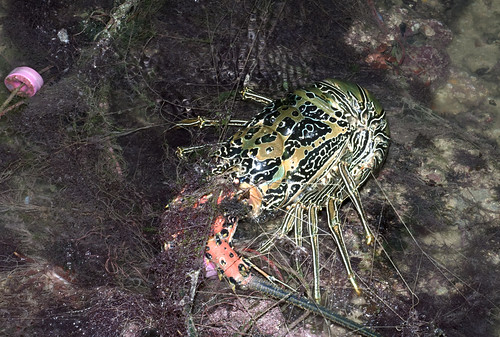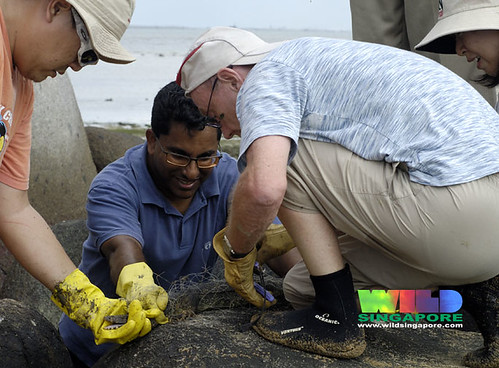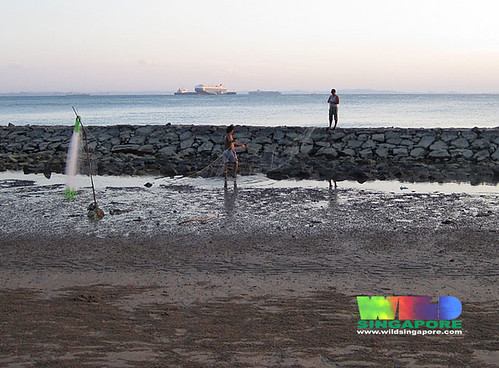What are driftnets?
More properly called gill nets, these are very long nets made up of plastic (non-biodegradable) filaments that are nearly transparent and entangle all kinds of animals large and small. They may be set up near the high shore, among mangroves or hung from floats and allowed to drift in the water near reefs.
 |
| Laying a driftnet across the mangroves at Berlayar Creek. |
Why are driftnets abandoned?
These nets may come lose and float away. Or simply left behind or dumped on the shore after use.
Why are abandoned driftnets a threat?
The abandoned nets continue to trap animals. Animals that die in the nets attract scavengers such as crabs, that in turn get trapped. Air breathing marine animals may get trapped in these nets and drown. These include dugongs, sea turtles, otters and snakes.As the plastic filaments are non-biodegradable, the killing can go on for a long time.
What animals are hurt in abandoned driftnets?
Here are some seen in the past.
 |
| Shark and other large fishes in a driftnet on Cyrene Reef. |
 |
| Living lobster trapped in abandoned driftnet on St. John's Island. |
 |
| Releasing horseshoe crabs trapped in an abandoned driftnet on Chek Jawa. This photo was used by the Prime Minister in his National Day speech in 2010. |
 |
| Crabs in an abandoned fish trap on Pulau Sekudu. |
 |
| Releasing a young Malayan water monitor from an abandoned driftnet, during a clean up effort at Pulau Sekudu. |
 |
| Little Heron killed by a fishing line, from the Bird Ecology Study Group blog. |
 |
| Barn owl entangled in a fishing line, from the Bird Ecology Study Group blog. |

